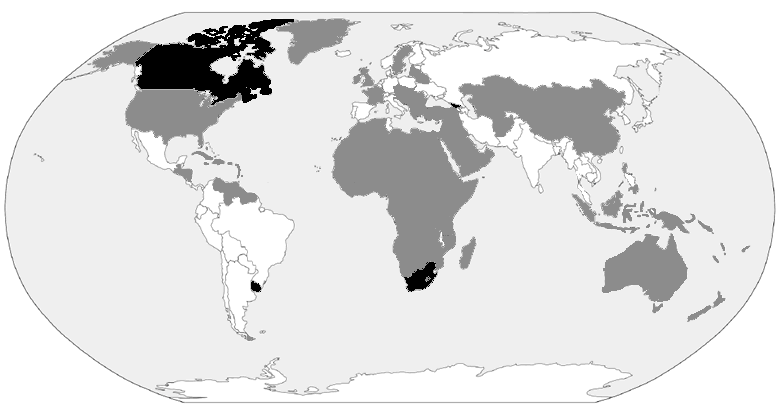Is legalizing recreational marijuana becoming a trend?
Legalizing marijuana is becoming a popular trend all around the world. In 2013, Uruguay became the first country to legalize recreational cannabis. In October, Canada became the second nation to legalize the possession and use of recreational marijuana.
Recreational marijuana is currently illegal under federal law in the United States. However, it has been legalized in certain states. 10 states and the District of Columbia have passed laws that legalized recreational marijuana. These 10 states are Alaska, California, Colorado, Maine, Massachusetts, Michigan, Nevada, Oregon, Vermont and Washington. However, each state has different laws on the ways in which marijuana can be possessed. For example, Michigan permits adults age 21 and older to purchase and possess marijuana for recreational use. Vermont passed a law that allows adults 21 and older to grow and possess a limited amount of cannabis.
Most Americans have different views on whether or not marijuana should be legal and whether it should be used just for medical purposes or recreational purposes. Marijuana hasn’t always been as accepted as it is now, but it also hasn’t always been as disliked as it is now.
State-level prohibition of marijuana began in the United States in the early 1900s, followed by the decriminalization in the 1970s. Medical cannabis first became legal in 1996 in California. Then in 2012, Washington and Colorado became the first two states to legalize recreational marijuana.
Legalizing marijuana actually helped the economy in these states. For example, Colorado has had better sales than they expected on marijuana in the past number of years. In 2015 alone, Colorado collected more than $135 million in taxes and fees on both medical and recreational marijuana. Legalizing the plant also increased jobs. A study was done in Nevada that reported legalizing recreational marijuana in the state would add 41,000 jobs and generate over $1.7 billion in labor income by 2024.
Although recreational cannabis is only legal in 10 states and Washington D.C., medical marijuana is legal in 33 states and the District of Columbia. These states are Alaska, Arizona, Arkansas, California, Colorado, Connecticut, Delaware, Florida, Hawaii, Illinois, Louisiana, Maine, Maryland, Massachusetts, Michigan, Minnesota, Missouri, Montana, Nevada, New Hampshire, New Jersey, New Mexico, New York, North Dakota, Ohio, Oklahoma, Oregon, Pennsylvania, Rhode Island, Utah, Vermont, Washington and West Virginia.
Studies show evidence that marijuana can help with many medical problems including nausea, pain and loss of appetite, Parkinson’s disease, inflammatory bowel disease, PTSD (post-traumatic stress disorder), epilepsy and multiple sclerosis. Marijuana is much safer than other medications prescribed to treat some of the same symptoms. Medical marijuana can be used to effectively treat chronic pain, which opioids are typically used for. Opioids can cause deadly overdoses, but marijuana cannot.



